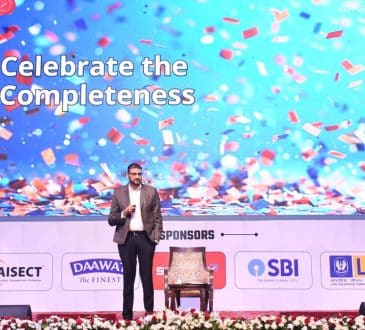6 New Year’s Resolutions for Nonprofit Success

The nonprofit sector is in need of renewal. According to Give.org, only 1 in 5 individuals trust charities to use their donations well. Giving is down 50% over the last decade, and the National Council for Nonprofits reports over half of nonprofits have staff positions they can’t fill and waiting lists for many services currently run more than a month long.
The New Year brings us an opportunity for renewal. And there is very good news: it is now well understood how small to midsize nonprofits can pivot from struggling for survival to financial health and continuous growth of the services they provide their communities.
It all starts with imagination.
Let’s imagine a version of our organizations that reflects all that we know about effective organizational leadership — regardless of tax status or mission: organizations that are both audacious and efficient, that operate with a business brain as well as a social heart, and ones that are more transparent and accountable to their stakeholders and supporters. Let’s make six wishes for greater nonprofit success in 2025 and then start translating these dreams into reality with practices that are proven to work.
- I wish for more performance benchmarks. Performance benchmarks — also known as Key Performance Indicators (KPIs) — are a large part of what drives all successful organizations forward. Evidence continues to demonstrate that, no matter what type of organization, a small, focused set of robust company-wide KPIs are critical for good teamwork and optimal organizational performance. While this irrefutable truth is embraced by leaders of large and sophisticated nonprofits (such as hospitals and universities), far too many small to midsize nonprofit leaders have never been trained to formulate and implement KPIs, and their boards often lack the experienced leaders and entrepreneurs who know how important these KPIs are — things like monthly trends (especially those that connect levels of service delivery to the organization’s vision of ultimate success ), quantitative measures of program impact and efficiency, fundraising measures (such as cost per dollar raised and donor loyalty), financial measures (such as months of liquidity on hand), and organizational measures of board and staff engagement.
These and other KPIs are defined in an organization’s long-term plan and then measured with discipline, focus, and urgency. As the old saying goes: You can’t manage what you don’t measure — but leaders can’t measure more than a handful of things well, so careful selection is essential.
- I wish for bigger, hairier, more audacious goals.
While passion for social change inspires every nonprofit leader, more need to have the courage of their convictions and translate that passion into clear, measureable, accountable long-term goals that describe what success looks like. All too often, leaders shy away from the audacious, inspirational, ambitious goals they should be setting because they fear risk or failure. This is understandable, but taking a conservative stance fails to inspire and dooms the organization to nibbling around the edges of social impact, not driving the transformational social change the world so urgently needs.This is not a “nice to have.” It is a “must have.” Your organization must have a clear, ambitious, easily measurable purpose — what Jim Collins calls a “big, hairy, and audacious goal” (BHAG).
Aspirational goals are an essential part of transformational change, and a BHAG goal takes your vision statement one step further by targeting a specific amount of change to be delivered by a specific date: We will go from X to Y by Z . This level of clarity and ambition inspires everyone to do their best work. Try to shoot the moon — even if you don’t get there, you will at least make it to the stratosphere, and you will deliver more social good than the organizations that are scared of heights.
- I wish for planning that is clear and easy to understand, and that uses the word “strategy” correctly.
The word “strategy” is among the most misunderstood words in the English language. Organizational leaders everywhere — in business, in government, and in the social sector — use the word as flavoring to imply they know what they are doing. But the uncomfortable truth is that most who use it abuse the term. As a result, too many organizational plans are filled with flavor-words like these — lots of lofty words and virtuous statements, but little in the way of concise clarity on organizational goals, and even less on tactics — how the organization proposes to execute on these goals. While it’s an oversimplification, “strategy” is the how. Strategy is not a goal. It is not an objective. It is not a milestone. It is not a measure. Knowing what strategy really is — as well as all the other essential elements of organizational planning — is the only way to articulate how your organization proposes to achieve your audacious goal. Along with a lack of an inspirational, measurable goal, far too many nonprofits don’t have a documented strategy for achieving their goal. As a result, the organization is operating on guesswork and inviting dysfunction.There’s more good news: It’s not that hard to learn about what strategy really is and how to document and track it. But all leaders on the team — both staff and board — must learn and share the same understanding of normative organizational planning.
- I wish for more testing and high-quality feedback.
The idea of “toxic positivity” has become a hot-button issue in the workplace. Such working environments are rooted in an always-positive mentality, and only the softest criticism is welcome — if any criticism is allowed at all. Nonprofit organizations are particularly susceptible to such thinking since they are often more focused on an abstract mission than a concrete profit margin. And personal passions for change often lead to feelings of insult when observers make constructive criticism.Criticism is absolutely essential to philanthropy, most especially when it’s solicited early and often from a variety of stakeholders. After all, no amount of vigorous planning is complete until it has been adequately reviewed and recalibrated by a clearly defined set of stakeholders. First is organizational staff: Is everyone fully involved in the plan? Is the board 100% aligned? What do other organizations in our mission space think? Do they want to partner with us? Before we ask for money, have we taken the time to socialize the plan with our current supporters? Are we listening to what they say?
As nonprofit organizations wind up a whole new year of operations, I hope they make a conscious effort to incorporate high-quality feedback around their proposed plans at every opportunity. “Everyone gets a trophy” blinds us to the social impact work that still needs to be done.
- I wish for revenue scorecards.
Sustainable nonprofits need very specific strategies around all forms of revenue: not just gifts, grants and other contributions, but earned revenue and even debt where appropriate. Once they have defined a plan to raise the resources necessary to fund their ambitious goal, then they need to create a scorecard that tracks all the activities dictated by their strategy. Raising money from individuals? Well, how many trust-building conversations are you havingwith current and prospective supporters every week? How many of your prospective supporters progress to the point they consider making a charitable gift? How many say no? How many must you approach to get to your goal?One cornerstone of effective management is that every goal needs a scorecard: a focused table of data that shows all the vital metrics of the revenue strategy as it is being applied. They require discipline and focus — as well as the investment to align the entire team and ensure everyone analyzes the data and uses it to improve.
- I wish for real-time executive dashboards.
Having a clear, compelling, concise scorecard around revenue is a great start. But how is the organization using that money to deliver social good? Successful organizations set clear, measurable goals, articulate the how — the strategy — to achieve the goal, define the KPIs that measure strategy execution, and then collect and track KPI trend data on scorecards. Start with revenue and then continue to every other organizational goal, compiling all KPIs into a comprehensive “executive dashboard.” Executive dashboards are the primary focus for successful nonprofits: They provide staff with clear direction and performance feedback. They give boards the tool they need to guide the organization. They communicate results to funders. And they give prospective supporters essential levels of trust that the organization is both transparent and accountable.Still, the practice is used by only a tiny segment of the social sector.
Plans are meaningless unless their execution is tracked, their trends are compiled, and their data is effectively visualized. These dashboards take time to build, but their value to fostering organizational health and mission fulfillment are irreplaceable.
What do you wish?
The new year is a great time for change. And a time for transformation. As we begin 2025, let us all support the most courageous nonprofit leaders, those with the management savvy and organizational skill to translate ambitious goals into disciplined day-to-day practice.
Written by Donald Summers, Ed.M.
Have you read?
Best cities in the world.
Largest Economies in the World by GDP (PPP).
Largest Asset Owners In The World.
Best Countries for Work-Life Balance.
Largest Economies in the World by GDP (nominal).
Bring the best of the CEOWORLD magazine's global journalism to audiences in the United States and around the world. - Add CEOWORLD magazine to your Google News feed.
Follow CEOWORLD magazine headlines on: Google News, LinkedIn, Twitter, and Facebook.
Copyright 2025 The CEOWORLD magazine. All rights reserved. This material (and any extract from it) must not be copied, redistributed or placed on any website, without CEOWORLD magazine' prior written consent. For media queries, please contact: info@ceoworld.biz








